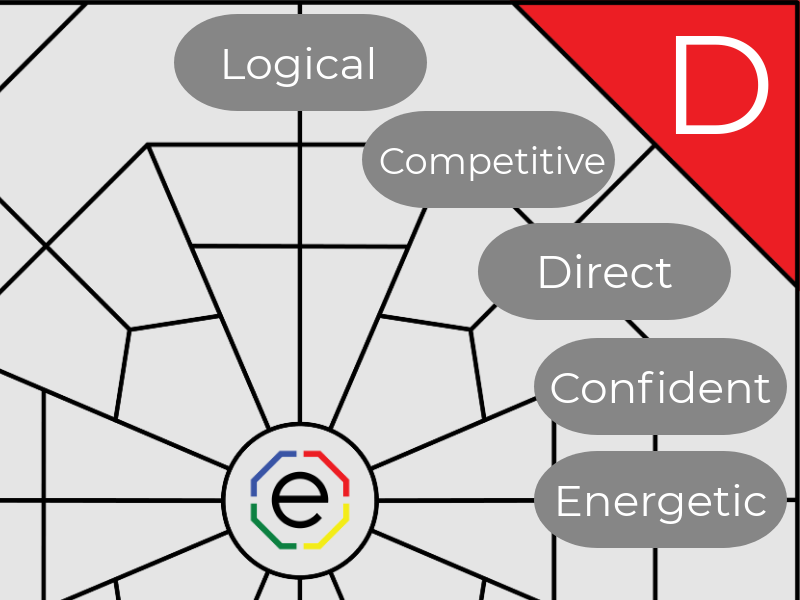How do we identify and describe D-styles?
Do you have colleagues who tend to be fast-paced, task-focused, and more assertive? Is it easy or more challenging for you to work with them? You can interact more effectively with them if you understanding D-styles.
DISC styles

D-style is one of the four main DISC styles along with I, S, and C styles. There is no style that is better or worse when understanding D-styles, or any of the DISC styles. All styles have strengths and development areas; they just happen to be different.
Our DISC styles do not limit what we can accomplish or predict how successful we can be. It simply predicts how we prefer to do things. We can find all of the four DISC types represented by very successful people. However, the most successful people know who they are and they know when to modify their style appropriately.
Identifying D-styles

D-styles want to actively control tasks and things. They are independent self-starters, and are motivated to get tasks done. They move at a fast pace and can come across as direct and demanding.
D-styles are often comfortable making the hard decisions because they are more able to separate their emotions from their decision-making. These risk-takers don’t spend a lot of time agonizing over wrong decisions or non-essentials.
They are decisive, multi-taskers. They tend to push their ideas through and can state their own opinions as facts. D-styles may have difficulty understanding other viewpoints and feelings. They may be irritated by what they perceive as inefficiency and indecisiveness.
Their biggest fear is loss of control; they like to be in charge. The D-style’s favorite question starts with ‘what,’ as in, ‘what’s the bottom line?’
How D-styles prefer to communicate

D-styles prefer communication to be brief and to the point. They focus on results and are not as interested in small talk. They can come across as blunt and demanding. D-styles tend to speak more than listen because they want to control the interaction. They may even view their interaction with you as a challenge to win.
D-styles may be seen as impatient and demanding because they want to take charge and speed things along. They will make decisions and take action quickly, sometimes before you’ve even finished what you wanted to say.
Tips for D-styles
D-styles tend to thrive in fast-paced environments. They are more comfortable reacting quickly. They prefer to push aside the extraneous things to focus on what needs to done.
However, D-styles may want to consider slowing the pace down a bit and being more patient. Often, by doing so, they are able to let ideas come to fruition and receive input from others. In the end, they may get to their goals more efficiently.
Tips for communicating with D-styles
 By understanding the D-style, we are able to adjust our style to better interact with them. There is no DISC style that is better or worse. We all have similarities and we all have differences in our styles.
By understanding the D-style, we are able to adjust our style to better interact with them. There is no DISC style that is better or worse. We all have similarities and we all have differences in our styles.
D-styles want immediate feedback. They want you to focus on the subject and maintain results orientation. They don’t want to spend time on non-essentials like chit chat. You will be more successful when focusing on high points and not overusing data. Be aware of their personal space, and try not to focus too much on emotions. Finally, act quickly because they decide and take action quickly.
Think of your own D-style colleagues. Are there any simple adjustments you could make the next time you interact with them?
